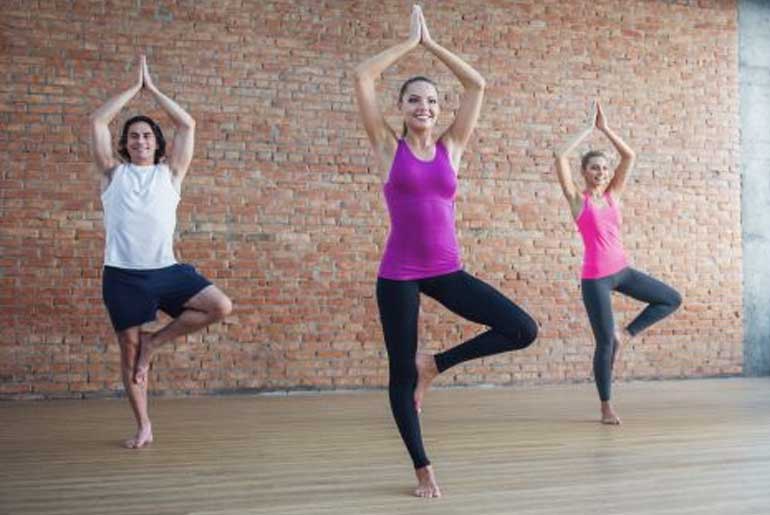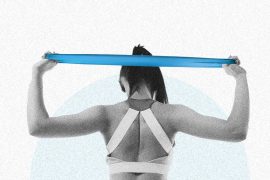Balance is a fundamental aspect of fitness that goes beyond the realm of tightrope walkers and yogis. It plays a crucial role in daily activities such as walking, climbing stairs, and engaging in sports. Good balance enhances coordination, prevents injuries, and boosts overall physical performance. Despite its importance, balance is often overlooked in fitness routines. Incorporating balance exercises into your training regimen can significantly improve your stability and help you perform various tasks more efficiently.
As we age, our balance naturally deteriorates, increasing the risk of falls and injuries. Regular balance exercises can counteract this decline, enhancing your stability and overall quality of life. Whether you’re an athlete looking to elevate your performance or someone who wants to move more confidently in everyday activities, focusing on balance can provide substantial benefits and contribute to a safer, more active lifestyle.
Testing your balance is crucial for assessing and improving stability, and these 10 balance exercises offer a comprehensive approach to enhance your fitness. Each exercise targets balance in unique ways, helping you gauge your current stability and work towards better overall fitness. Mastering these balance exercises will not only improve your balance but also contribute to your overall physical well-being.
1. Single-Leg Stand
The single-leg stand is a fundamental exercise designed to assess and improve static balance and lower-body stability. This exercise helps identify any imbalances between the left and right sides of the body, engaging stabilizing muscles in the ankles, knees, and hips. It promotes joint health, reduces injury risk, and enhances proprioception—your body’s ability to sense its position in space. This is essential for maintaining balance and coordination during daily activities and athletic performance.
To perform the single-leg stand, begin by standing tall with your feet together. Lift your right foot off the ground, bending your knee to form a 90-degree angle. Maintain this position for 30 seconds to a minute, ensuring that your hips stay level and your standing knee remains steady. Switch to your left foot and repeat the exercise. For added challenge, try closing your eyes or standing on an unstable surface like a foam pad.
2. Single-leg Romanian Deadlift (RDL)
The Single-leg Romanian Deadlift (RDL) is an effective exercise that targets the hamstrings, glutes, and core, while also challenging your dynamic balance. This movement is particularly useful for enhancing stability and strength in the posterior chain, which includes the muscles along the back of your body. By improving hip mobility and addressing muscular imbalances, the single-leg RDL can help prevent injuries and promote overall functional fitness.
To perform the single-leg RDL, start by standing on your right leg with a slight bend in the knee. Hinge at your hips while extending your left leg straight behind you and lowering your torso toward the ground. Ensure your back remains flat and your hips stay squared to the floor throughout the movement. You can reach your hands toward the ground or hold a weight for added resistance. Return to the starting position and repeat the exercise for eight to 12 repetitions before switching to the other leg. This exercise not only strengthens the posterior chain but also improves core stability, which is beneficial for athletes and individuals alike.
3. Tree Pose
The Tree Pose is a classic yoga asana that enhances static balance, mental focus, and proprioception while strengthening the muscles around the ankles and knees. By requiring you to balance on one leg while holding a specific posture, this pose not only improves your physical stability but also promotes mental concentration and mindfulness.
To perform the Tree Pose, begin by standing with your feet together and arms at your sides. Shift your weight onto your left foot and place the sole of your right foot against your inner left thigh or calf, making sure not to place it directly on the knee. Bring your hands together in front of your chest in a prayer position. Hold this position for 30 seconds to a minute before switching to the other side. For a greater challenge, try extending your arms overhead or closing your eyes while maintaining the pose.
4. Split Squat
The split squat is a powerful lower-body exercise that enhances strength and balance, with a primary focus on the quadriceps and glutes. This exercise also aids in improving hip mobility and stability. By isolating each leg, the split squat allows for the development of unilateral strength, which can help address muscular imbalances and bolster overall leg strength.
To perform a split squat, begin in a staggered stance with your right foot forward and left foot positioned back, approximately two feet apart. Lower your body until your right thigh is parallel to the ground and your left knee is close to touching the floor. Ensure your torso remains upright and your front knee stays aligned over your ankle. Push through your right heel to return to the starting position. Complete eight to 12 repetitions on one leg before switching to the other. This exercise engages the core for stability and can be modified with weights or adjusted stances to target different muscle groups and intensities.
5. Suitcase Carry
The suitcase carry is an effective balance exercise for testing and improving dynamic balance, grip strength, and core stability. By simulating the act of carrying a heavy object in one hand, this exercise challenges your ability to stabilize your body against an asymmetrical load. It engages the obliques, shoulders, and grip muscles, fostering overall functional strength and enhancing your ability to handle real-life tasks more efficiently.
To perform the suitcase carry, hold a heavy dumbbell or kettlebell in your right hand by your side. Stand upright with your shoulders back and your core engaged. Walk forward for 30 to 50 feet, maintaining a straight posture and avoiding any leaning or twisting of the torso. After completing the distance, switch the weight to your left hand and repeat the exercise. Concentrate on keeping your steps steady and balanced throughout. This exercise not only strengthens the muscles involved but also improves your posture and stability, making it practical for daily activities such as carrying groceries or lifting objects.
6. Single-Leg Squat to Box
The single-leg squat to box is an effective exercise for enhancing single-leg strength, balance, and coordination. This movement targets the quadriceps, hamstrings, glutes, and calves while helping to identify and correct leg imbalances. By performing a controlled squat on one leg, you improve lower-body strength and stability.
To execute this exercise, stand on your right leg in front of a box or bench. Slowly lower yourself into a squat position, gently tapping your glutes on the box. Keep your left leg extended in front of you and your torso upright throughout the movement. Push through your right heel to return to the starting position. Complete six to 10 repetitions on one leg before switching to the other. Begin with a higher box and progressively lower the height as you build strength and confidence. This exercise also engages your core muscles to maintain alignment and balance, helping to reduce the risk of lower back strain and improve performance in activities requiring unilateral strength and stability, such as running and jumping.
7. Heel-to-Toe Walk
The heel-to-toe walk is a dynamic coordination and balance exercise that helps improve gait and stability. By requiring you to walk in a straight line with one foot placed directly in front of the other, this exercise engages the lower leg and foot muscles, promoting strength and endurance in these areas.
This exercise challenges proprioception and spatial awareness, which are crucial for maintaining balance and coordination. It is particularly beneficial for older adults or individuals aiming to enhance their walking mechanics and reduce the risk of falls.
To perform the heel-to-toe walk, start with your feet together. Step forward with your right foot, placing your heel directly in front of your left toe. Continue walking in a straight line, ensuring each heel is positioned directly before the opposite toe. Keep your eyes forward and your arms at your sides or extended for balance. Continue for 20 to 30 steps, focusing on maintaining a steady and controlled movement throughout.
8. Three-Way Toe Taps
The three-way toe taps exercise is an effective balance and proprioception drill that strengthens your ankles, calves, and core. By tapping your toes in multiple directions—forward, to the side, and behind—you challenge your ability to maintain balance while shifting your weight, which enhances overall coordination and stability.
This exercise also engages your hip flexors, glutes, and lower leg muscles, contributing to improved lower-body strength and endurance. It is particularly useful for developing the ability to perform multi-directional movements, which are crucial for both athletic performance and daily activities.
To perform the three-way toe taps, stand on your right leg with a slight bend in the knee. Tap your left toes forward, to the side, and then behind you, returning to the starting position after each tap. Maintain an upright torso and controlled movements throughout. Complete eight to 12 taps in each direction before switching legs.
9. Lateral Shuffle
The lateral shuffle is an effective balance exercise for improving lateral movement, agility, and dynamic balance. It is particularly beneficial for athletes and individuals engaged in activities requiring rapid changes in direction. This exercise targets the hip abductors, adductors, and quadriceps, strengthening and stabilizing these muscle groups.
Additionally, the lateral shuffle enhances cardiovascular fitness and coordination, making it a valuable component of high-intensity interval training (HIIT). By boosting your ability to move sideways with speed and control, this exercise can improve your performance in sports such as basketball, tennis, and soccer.
To perform the lateral shuffle, stand with your feet shoulder-width apart and knees slightly bent. Push off with your left foot to shuffle to the right, stepping your right foot to the side. Follow with your left foot, maintaining a quick and controlled pace. Shuffle for 10 to 20 feet, then switch directions and continue for 30 to 60 seconds.
10. Single-Arm Plank
The single-arm plank is a challenging balance exercise that tests and enhances core stability and upper-body strength through asymmetrical loading. By lifting one arm off the ground, you force your core muscles, especially the obliques and transverse abdominis, to work harder to maintain stability. This exercise not only engages the core but also strengthens the shoulders, chest, and back, promoting overall upper-body endurance and coordination.
To perform a single-arm plank, start in a standard plank position with your hands directly under your shoulders and your body aligned in a straight line. Lift your right hand off the ground and extend it forward or keep it by your side. Hold this position for 10 to 20 seconds, ensuring your hips remain level and your core is engaged. Switch to the left hand and repeat the process. For an added challenge, you can lift the opposite leg simultaneously while holding the plank position. This variation further enhances balance and functional strength, making it a valuable addition to any training regimen.
Balance is a crucial component of fitness that impacts everything from daily activities to athletic performance. Integrating balance exercises into your routine not only enhances coordination and stability but also reduces the risk of injuries and improves overall physical performance. As we age, maintaining and improving balance becomes even more vital for preventing falls and ensuring a high quality of life. The ten balance exercises outlined—ranging from the single-leg stand to the single-arm plank—offer a comprehensive approach to enhancing your stability and strength. By regularly incorporating these balance exercises into your training regimen, you can address muscular imbalances, improve proprioception, and boost your functional fitness, leading to a safer and more active lifestyle.
Disclaimer:
The information contained in this article is for educational and informational purposes only and is not intended as a health advice. We would ask you to consult a qualified professional or medical expert to gain additional knowledge before you choose to consume any product or perform any exercise.








